![]()
![]()
![]()
Use LEFT and RIGHT arrow keys to navigate between flashcards;
Use UP and DOWN arrow keys to flip the card;
H to show hint;
A reads text to speech;
164 Cards in this Set
- Front
- Back
- 3rd side (hint)
|
Prophecy |
Genre where God and man might have different intentions |
Both meanings are correct |
|
|
2 types of revelation |
Special General (obvious all around / Romans 1) |
God's 2 means of revelation |
|
|
2 types of special revelation |
Jesus Bible |
|
|
|
General Revelation |
God reveals Himself in general throughout His creation |
Romans 1, Psalm 8 |
|
|
Language (2) of Old Testament |
Hebrew, some Aramaic |
|
|
|
Language (2) of New Testament |
Greek, some Aramaic |
|
|
|
Rational Inspiration (theory) |
View: God was not involved in writing the Bible. View held by atheists. Sees miracles as myths. |
Aka intuition |
|
|
Illumination Inspiration (theory) |
View: God inspired writings like He inspires a song or poem. Weakness: undermines authority of Bible |
|
|
|
Dynamic Inspiration (theory) |
View: God inspired thoughts and concepts, but not every word. Weaknesses: limits Biblical authority, allows criticizing, changing, disregarding parts of Bible. |
|
|
|
Mechanical Dictation Inspiration (theory) |
View: human writers took dictation directly from God. Weaknesses: ignores unique writing style / lens of each author. No Christian scholar holds this view. |
Held by muslims, mormons |
|
|
Plenary-Verbal Inspiration (theory) |
View: the whole (plenary) Bible is inspired, even every word (verbal). Bible is infallible, inerrant. |
What we believe. |
|
|
Define: inerrant, infallible |
Inerrant: without error. Infallible: incapable of error. |
|
|
|
Bible was written by 2 authors: |
God and the human author |
|
|
|
Bible was written by ___+ men |
40 |
|
|
|
Bible was written over the course of ______ to ______ years. |
1600 to 1800 years |
|
|
|
# of Old Testament books |
39 |
|
|
|
# of New Testament books |
27 |
|
|
|
Jewish OT divisions |
Law (torah) Writings Prophets |
3 |
|
|
Christian OT divisions |
Law History Wisdom Major Prophets Minor Prophets |
5 |
|
|
Anonymous vs Pseudonymous |
Anonymous: no author named Pseudonymous: falsely attributed to an author |
|
|
|
Autograph |
Original writing |
|
|
|
Inspiration |
Process by which God gave His word (by the Holy Spirit) through the writers of the Bible. |
Definition |
|
|
Illumination (2 meanings) 1. 2. |
1. All scripture is God-breathed 2. Holy Spirit moved men to write scripture |
2 Timothy 3:16 |
|
|
Define: Testament |
Covenant |
|
|
|
Define: Transmission |
The way autographs (originals) were copied and shared/interpreted over time and space |
|
|
|
Define: Canonization |
Process of determining what went in the Bible |
|
|
|
Define: Autograph |
Original manuscript / original copy |
|
|
|
Define: Extant |
Still in existence today |
|
|
|
Define: Eclectic |
Derived from a broad and diverse range of sources |
|
|
|
Are any Bible autographs extant today? |
No - most libraries burned during antiquity |
|
|
|
Main types of variants in the Bible (2) |
Unintentional Intentional |
|
|
|
Unintentional Textual Variants (4) |
1. Sight (nowhere vs now here) 2. Hearing (night vs knight) 3. Writing (typos) 4. Judgment (multiple word meanings) |
Variant = Error |
|
|
Intentional Textual Variants (5) |
1. Revised grammar/spelling 2. Harmonizing passages 3. Omitting difficult-to-reconcile details 4. Conflating texts (including all meanings) 5. Interpolation (adding words/phrases to clarify a text) |
They are probably trying to help |
|
|
How accurate is the Greek NT? |
99.5% accurate |
|
|
|
When were chapter/verse divisions added to Old Testament and New Testament? |
Chapters: 1200s AD Stephen Langdon OT Verse div: Ben Asher fam 900s AD NT Verse div: 1551 AD |
|
|
|
Are Bible chapter and verse divisions inspired? |
No. No they are not. |
|
|
|
Canonization: was it formal or informal? (and what does that mean?) |
Informal process Jews determined OT before Jesus Christians 367 AD |
|
|
|
Theories of Bible translation (4) |
1. Paraphrase (AMP, MSG) good for main ideas 2. Formal Equivalence / literal (NASB, ESV, KJV) word for word 3. Optimal Equivalence (CSB) uses both formal and functional equivalence 4. Functional Equivalence (NIV, NLT) thought for thought |
Bible translations |
|
|
Bad Bible Translations (3) |
1. Cult - New World Translation (Jehovah's witnesses), LDS (deseret) 2. Agenda-Driven - Queen James, Jubilee (Hebrew Roots) 3. Condensed - Readers Digest / Biblette |
|
|
|
Define: Hermeneutics |
The theory (science) and practice (art) of Biblical interpretation. |
|
|
|
Hermeneutics - 3 parts |
1. Scientific - has rules 2. Artistic - involves imagination, skill, practice 3. Spiritual - lead by Holy Spirit |
|
|
|
Hermeneutics: 3 steps |
1. Exegesis: what did the text originally mean 2. Application: what do I understand the text to mean? How do I apply it? 3. Proclamation: communicate meaning to others |
CIA |
|
|
Define: Exegesis |
Properly examine text to determine correct meaning. Expound in great detail. |
|
|
|
Define: Exposition |
The act of communicating the meaning of a text. |
|
|
|
Define: Homiletics |
Preaching. Method (science) and practice (art) of communicating the meaning of a Biblical text through preaching (more emotion) |
Communication method |
|
|
Define: Pedagogy |
Teaching. Method (science) and practice (art) of communicating the meaning of a Biblical text. Less emotional. |
Communication method |
|
|
Define: Eisegesis (+ examples) |
Reading meaning into a text that is NOT really there. Bad: start w/idea and read that idea into a text |
|
|
|
Hermeneutical Circle |
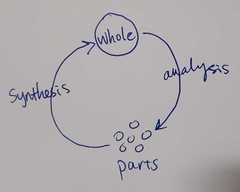
|
|
|
|
Hermeneutical Spiral |
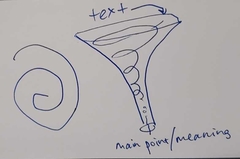
|
|
|
|
Hermeneutical Triad |
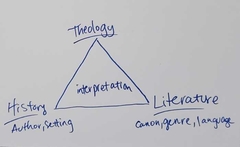
|
|
|
|
Hermeneutical Cubing |

|
|
|
|
Who determines what a text means? 1. Reader (weaknesses) |
Ignores original meaning. Subjective (no right/wrong) Allows agenda-driven interpretations. |
|
|
|
Define: Flashback |
Recalling a previous event |
|
|
|
Define: Pericope (pear rick o pee) |
Section of scripture that forms a unit (often a group of paragraphs that deal with the same subject or event) |
|
|
|
Latin: ipsissima verba |
The exact words |
|
|
|
Latin: ipsissima vox |
The gist of what was said |
|
|
|
Who determines what a text means? Text. (weaknesses) |
Can result in new, unintended meanings. Subjective (no right/wrong) Text takes on a life of its own. |
|
|
|
Bible interpreter must be (4) |
1. A Christian 2. Guided by the Holy Spirit 3. Diligently studying the Bible 4. Using proper hermeneutics |
|
|
|
Main periods of church history (5) |
1. Apostolic - 30-100AD 2. Patrisic - 100-590AD 3. Middle Ages - 590-1500AD 4. The Reformation - 1500-1650AD 5. Skeptical - 1650-now |
|
|
|
Apostolic Period |
Literal, high view of scripture |
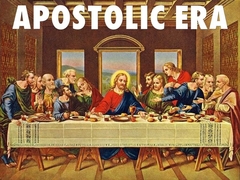
|
|
|
Patristic period (and 2 interpretation methods) |
Promoted allegory, relied on tradition, some literal. Alexandrian - promoted allegory Antiochene - literal |

Both start with "A" |
|
|
Middle Ages |
Patristic / Reformation Tradition > Interpretation Literal -> Moral -> Spiritual -> Heavenly |

|
|
|
The Reformation |
Proper interpretation Languages: German, Spanish, English Praise God! |

|
|
|
Skeptical period |
Anti-supernatural Approach scripture like any other book |
|
|
|
Define: Allegory |
There's a hidden/secret meaning, a symbol, that usually has nothing to do with actual meaning. Thanks, Greeks. |
|
|
|
Define: Type |
Person or thing symbolizing the ideal (Jesus). Ie: Abraham's near-sacrifice of Isaac |
|
|
|
Define: Pesher |
From Hebrew "pesharim" for "interpretation". Focused on current fulfillment of OT prophecy ("this is that") |
|
|
|
Plummer's definition of: Meaning (meaning, implication, significance, subject matter) |
Meaning: principle that the author consciously willed to convey by the writing used. |
|
|
|
Plummer's definition: Implication (meaning, implication, significance, subject matter) |
Implication: submeanings of a text that legitimately fall within the author's willed principle, whether the author was aware of them or not. |
|
|
|
Plummer's definition: Significance (meaning, implication, significance, subject matter)a |
Significance: how the reader responds (with obedience or disobedience) |
|
|
|
Plummer's definition: Subject Matter(meaning, implication, significance, subject matter) |
Subject Matter: content |
|
|
|
Define: Midrash מדרש |
Specific rules of interpretation. Looked for other words and phrases to shed light on the specific text. |
|
|
|
Define: Second Temple Period |
516 BCE to AD 70 |
|
|
|
Main locations and methods of Jews (during Second Temple Period) |
1. Hellenistic (Alexandria, Egypt) - used some allegory 2. Rabbinic (Jerusalem) - relied heavily on tradition 3. Qumran (Qumran - NW of Dead Sea) - regarded priesthood as corrupt |
|
|
|
Allegory (problems with) |
1. Meanings are hidden/secret, and therefore unrelated to what text actually says. 2. Subjective/Arbitrary - based on reader response. 3. Miss the actual meaning and think they're deep. |
|
|
|
Fourfold Meaning of Scripture (and time period) |
1. Literal 2. Moral (application) 3. Spiritual (allegory) 4. Heavenly
Middle Ages |

|
|
|
Why so many interpretations? 1. Belief |
No belief in God Without the Holy Spirit, there is no illumination |
|
|
|
Why so many interpretations? 2. View of God |
Distorted view of God Think God is weak or far removed |
|
|
|
Why so many interpretations? 3. Presuppositions |
Wrong Presuppositions Low view of scripture |
|
|
|
Why so many interpretations? 4. Agenda |
Preconceived agenda Trying to prove their own points |
|
|
|
Why so many interpretations? 5. Harmeneutics |
Wrong/bad theories Improper translations |
|
|
|
Why so many interpretations? 6. Eisegesis |
Similar to #4 preconceived agenda Reading trying to prove your own point |
|
|
|
Why so many interpretations? 7. Knowledge/skill |
Lack of knowledge or skill |
|
|
|
Why so many interpretations? 8. Maturity |
Levels of spiritual maturity |
|
|
|
Why so many interpretations? 9. Text |
Difficult texts |
|
|
|
Why so many interpretations? 10. Others |
Influenced by others |
|
|
|
Do many wrong answers negate the RIGHT answer? Why/why not? |
No! Because there is still a RIGHT answer. |
|
|
|
Wrong Presuppositions (4) |
1. Low view of scripture (errors) 2. Many meanings / interpretations (there aren't) 3. Some believe Paul distorted Christianity 4. Bible is inadequate, unfinished |
|
|
|
Good Presuppositions (6) |
1. God exists. 2. God perfectly revealed Himself through Christ and the Bible. 3. The Bible is inerrant, infallible. 4. The Bible is internally consistent. 5. Plenary-Verbal method 6. Scripture is CLEAR on matters of salvation. |
|
|
|
Is it possible to approach the Bible without presuppositions? |
No. We all have thoughts and experiences that shape how we study. We need to be aware of them. |
|
|
|
Should a person approach the Bible without Presuppositions? Why/why not? |
No - we should approach it with GOOD presuppositions. |
|
|
|
If someone does NOT believe in God, 3-step solution to help them properly handle scripture: |
1. Place your faith in Jesus Christ and receive the Holy Spirit. 2. Trust in the inerrancy of God's word. 3. Unlearn bad habits, learn good habits. |
|
|
|
Name some groups that approach the Bible to prove their agenda. What style of study do they use? |
They all use Eisegesis 1. Feminists 2. Prosperity gospel 3. Homosexuals 4. Political groups (anarchists, marxists) |
|
|
|
Define: Perpiscuity of scripture |
The Bible is CLEAR - especially in matters of salvation |
|
|
|
Define: Low View of Scripture |
There are errors, which makes it easier to pick and choose what you believe. |
|
|
|
Define: High View of Scripture |
God perfectly revealed Himself through Christ and the Bible. Bible has no errors. |
|
|
|
What are the problems with people believing there are mistakes in the autographs of scripture? |
It makes it easier to ignore inconvenient or difficult texts or commands |
|
|
|
Examples of bad hermeneutics / harmeneutics |
1. Ignoring figures of speech (ie: when Jesus said "if your right hand causes you to sin, cut it off") 2. Ignoring context. 3. Improper translation. |
|
|
|
Eisegesis: 2 steps people take when practicing |
1. Start with an idea 2. Go to the Bible to try to prove it |
|
|
|
Why is it important to have the right presuppositions when interpreting the Bible? |
1. Points us in the right direction 2. Saves time 3. CAN lead to correct interpretation |
|
|
|
What Bible verses describe Biblical inspiration and inerrancy? |
2 Timothy 3:16 "All Scripture is breathed out by God and profitable for teaching, for reproof, for correction, and for training in righteousness," 2 Peter 1:20-21 "Above all, you must understand that no prophecy of Scripture came about by the prophet’s own interpretation of things. For prophecy never had its origin in the human will, but prophets, though human, spoke from God as they were carried along by the Holy Spirit." Psalm 119, Matthew 5:18, John 10:35 |
|
|
|
Criticisms of Biblical inerrancy? Responses? |
They claim the Bible is not inerrant because: 1. The Bible doesn't claim to be inerrant (but it does) 2. Futile since no extant autographs (but we have many manuscripts and they are consistent) 3. Bibliolatry - worshipping the Bible 4. The Bible has errors (this is always a lack of understanding) |
|
|
|
Authorial consistency: how does knowing the Bible is inerrant help? |
We can believe the Biblical author so we gain historical context. Can compare multiple works by the same authors to provide patterns for word meanings. |
|
|
|
John was written later. Are Matthew and Mark therefore more accurate? |
No. All were inspired by the Holy Spirit and they all harmonize. |
|
|
|
Define: parallel books / parallel passages 4 examples / groups |
1 Samuel - 2 Kings + 1-2 Chronicles 1 Samuel - 2 Chronicles + pre-exilic and exilic prophets All 4 gospels Acts + Pauline Epistles |
|
|
|
Define: intra-author vs inter-author How does belief in inerrancy affect one's perspective on the issue? |
Intra-author: among the same author Inter-author: among all authors Biblical theology is consistent both intra and inter author. |
|
|
|
Since stories within the Bible show authors growing and developing theologies, how can er claim the author wrote with consistent theology? Ie: Moses, Matthew |
Inspiration of Holy Spirit. They wrote the books when they were older, not while they were murdering Egyptians etc. |
|
|
|
Define: Harmony / Harmonization |
Book that places parallel passages in side-by-side columns. Process of lining up of parallel passages. |
|
|
|
Define: Bibliolatry |
Worship of the Bible |
|
|
|
Define: Textual Criticism |
Art of comparing extant texts in order to determine the exact wording of the autograph. |
|
|
|
Define: Source criticism and Form criticism |
Form - considers the ORAL forms in which stories were passed from one person to another. Source - considers the WRITTEN sources. |
|
|
|
Define: Redaction criticism |
Writer was an editor, deciding which details to use, and how to present it. |
|
|
|
Define: Narrative criticism |
Characters, character development, plot (examines narrative features) |
|
|
|
What is The Quest for the Historical Jesus? |
Academic efforts to determine what words and actions may be attributed to Jesus. Sensational and not entirely Biblical efforts to prove some pretty weird stuff. |

|
|
|
Ways to reconcile alleged discrepancies in scripture (1/8): Textual Criticism |
The science and art of comparing extant texts in order to determine the exact wording of the autograph. |
|
|
|
Ways to reconcile alleged discrepancies in scripture (2/8): Linguistic analysis |
Examine syntax, context for use of words to determine the precise meaning. |
|
|
|
Ways to reconcile alleged discrepancies in scripture (3/8): Historical Setting |
Understand the historical setting, realizing that some historical records are incomplete. Ie: dietary restrictions went vegetarian -> all food -> kosher -> new Covenant (all food) |
|
|
|
Ways to reconcile alleged discrepancies in scripture (4/8): Use Form or Source criticism |
Consider form (oral) and source (written), which could account for differences in details. |
|
|
|
Ways to reconcile alleged discrepancies in scripture (5/8): Form or Source criticism |
Both Form (oral) and Source (written) consider the way in which information was transmitted over time. |
|
|
|
Ways to reconcile alleged discrepancies in scripture (6/8): Narrative Criticism |
Examine characters, plot, character development. It may be 2 different events. |
|
|
|
Ways to reconcile alleged discrepancies in scripture (7/8): Redaction criticism |
The author decides what to include and how to present it. Was it exact words? Or the gist of an idea? |
|
|
|
Ways to reconcile alleged discrepancies in scripture (8/8): Harmonize |
Use carefully and rarely. Compare multiple accounts of the same story. |
|
|
|
Define: Inductive Bible Study |
Inductive Bible Study: Making your own observations without consulting what other people have written. |
|
|
|
Steps of Exegesis: __________ (step 1 of 9) |
PRAYER - start by asking the Holy Spirit for guidance. Without His guidance, you have no chance. |

|
|
|
Exegesis: use the __________ ________ of the Bible (step 2 of 9) |
Use the best texts of the Bible Hebrew and Greek if possible Focus on formal equivalent, but use a mixture of formal, optimal, functional. |
|
|
|
Exegesis: approach the text with ______________ , _____________ to God, and _________________ (step 3 of 9) |
Approach the text with faithfulness, obedience to God, and humility. |
|
|
|
Exegesis: Determine the ___________ text. (step 4 of 9) |
Determine the focal text. |
|
|
|
Exegesis: Do a _________ examination of the text (step 5 of 9) |
Do a macro examination of the text. Read, read, re-read. |
|
|
|
Exegesis: Determine the ____________ of the text (step 6 of 9) |
Determine the genre of the text. |
|
|
|
Exegesis: Do a __________ examination of the text (step 7 of 9) |
Do a micro examination of the text |
|
|
|
Exegesis: Make a ______________ interpretation of the text. |
Make a preliminary interpretation of the text. |
|
|
|
Exegesis: Read how other ___________ interpret the text |
Read how other scholars interpret the text |
|
|
|
Steps of Exegesis: Use the BEST ...? (step 2 of 9) |
Use the best text of the Bible. Hebrew or Greek if possible. Otherwise, Formal Equivalence translations (ESV, NASB). |

|
|
|
Steps of Exegesis: approach the text in _____________ , _____________ to God, and _______________. (step 3 of 9) |
Approach the text in FAITHFULNESS, OBEDIENCE to God, and HUMILITY. |

|
|
|
Steps of Exegesis: determine the ________ text (step 4 of 9) |
FOCAL text - let text markers / subject determine where a unit ends. |
|
|
|
Steps of Exegesis: Do a __________ examination of the text. (step 5 of 9) |
MACRO - read within context, read read read. Look for themes, subject matter, emphasis. Make an outline. Meditate. |
|
|
|
Steps of Exegesis: Determine the ________ of the text. (step 6 of 9) |
GENRE - Historical narrative, genealogies, covenants, poetry, proverbs, prophecy, apocalypse, letter. |
|
|
|
Steps of Exegesis: Do a __________ inductive examination of the text. (step 7 of 9) |
MICRO - use proper tools, do NOT consult other scholars yet, outline, examine structure for patterns. |
|
|
|
Steps of Exegesis: Make a preliminary ________ of the text. (step 8 of 9) |
INTERPRETATION - interpret the author's meaning, using JESUS as the interpretive key. Let scripture interpret scripture. |
|
|
|
Steps of Exegesis: Read how scholars interpret it. __________ your interpretation necessary. (step 9 of 9) |
REFINE - vet your sources, use critical thinking, know that other believers are NOT an authority over you. |
|
|
|
Text Markers: __________ of a word, clause, sentence. (1 of 8) |
REPETITION - examples like "these are the generations of..." |
|
|
|
Text Markers: Grammatical __________ conjunctions or adverbs. (2 of 8) |
TRANSITIONAL - like then, therefore, etc. |
|
|
|
Text Markers: A ___________ question. (3 of 8) |
RHETORICAL - meant to think about the answer but not say it aloud. |
|
|
|
Text Markers: Any change in ___________ , ________ , ___________ , or __________. (4 of 8) |
Any change in LOCATION, TIME, SETTING, or SUBJECT. |
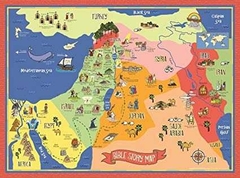
|
|
|
Text Markers: A change of _________ from one group to another. (5 of 8) |
ADDRESS - talking to a different people group |
|
|
|
Text Markers: Repitition of ______ words or concepts. (6 of 8) |
KEY - key words, concepts. |
|
|
|
Text Markers: Announcement of a new _______. (7 of 8) |
THEME - many Psalms start this way |
|
|
|
Text Markers: ___________ marks & paragraphs. (8 of 8) |
PUNCTUATION - use the Hebrew or Greek texts. If using English, use several translations. |
|
|
|
Genre (1 of 8): Historical Narrative |
Focus on: main characters (but don't overlook minor characters), plot & plot development, lessons & principles |
|
|
|
Genre (2 of 8): Genealogy |
Determine purpose (ie: tracing a Godly lineage, tracing an ungodly lineage, lineage of Christ, etc.). Note what each person adds - especially when women are mentioned. |
|
|
|
Genre (3 of 8): Covenant |
Main covenants: Adamic, Noahic, Abrahamic, Mosaic, Davidic, and New Covenant. Note recipients, responsibilities, benefits. |
|
|
|
Genre (4 of 8): Poetry / Psalms / Songs |
Many main symbols and figures of speech. Interpret with care. Hebrew poetry has different kinds of parallelism. |
|
|
|
Genre (5 of 8): Proverbs / Wisdom Literature |
Treat Proverbs as general truths (not promises). |
|
|
|
Genre (6 of 8): Prophecy |
Focuses on forth telling aspect for moral and religious truths. Use natural interpretation to distinguish between literal and figurative elements. |
|
|
|
Genre (7 of 8): Apocalypse |
Use same principles as prophecy. Literature focuses on end times (eschatology). Think of lessons for TODAY. |
|
|
|
Genre (8 of 8): Letter / Epistle |
Note: author, recipients, location. What was the occasion? Be slow to assume it applied to their culture, but not ours. |
|
|
|
What is the purpose of: A Bible atlas |
Bible atlas: maps, geography, cartography, trade routes |
|
|
|
What is the purpose of: Bible concordance |
Bible concordance: alphabetical listing of words and phrases found in the Holy Bible and where they occur |
|
|
|
What is the purpose of: Bible dictionary |
Definitions of scriptural terms |
|
|
|
What is the purpose of: Bible encyclopedia |
Details every Biblical concept |
|
|
|
What is a Lexicon? |
A wordbook or dictionary, especially of Greek, Latin, or Hebrew. |
|
|
|
What is a Cristological approach to interpreting scripture? |
Using Jesus as the interpretive key. Whole book is about Him. |
|
|
|
Must you agree with everything a commentary says? Why or why not? |
No. Commentaries have no authority over you. They can be of value, but think critically. |
|
|
|
What step of exegesis should you use commentaries? Why? |
The very end. Otherwise you risk interfering with the Spirit and your own study/growth. |
|

